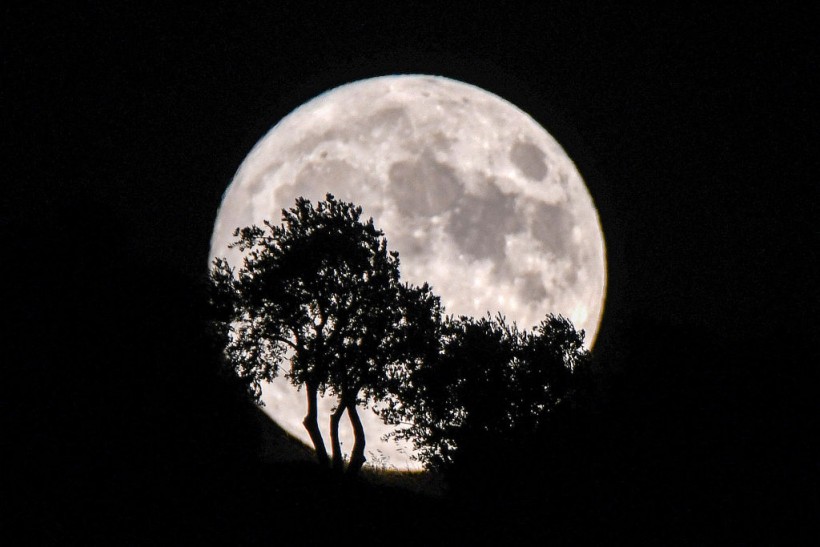The full moon has different names for each month of the year. This means that yearly, people can see 12 different full moons. These include three to four supermoons.
Some people may just treat a full moon as another happening they can post on Instagram and other social media platforms. But, for other individuals, full moons have great significance to their cultures.
Full Moon Names 2023 Guide: Here's What Each of Them Means

The "Blue Supermoon", the second full moon of a calendar month, rises on August 30, 2023 above the Deir al-Ballut camp for displaced persons in the rebel-held Afrin region of Syria's northern Aleppo province.
Patrick Hartigan, a professor of astronomy and physics at Rice University, explained that full moons and other astronomical events mark the passage of time. They also provide a steady rhythm to many people's lives.
"These cycles are independent of human activities and remind us that we are part of this world but that we do not control everything," he added via Business Insider.
If you love to take photos of full moons or just admire them, here's what their names mean:
Harvest Moon/Barley Moon/Corn Moon (September)
- The Harvest Moon is important for farmers since it's a sign that they need to finish harvesting corn and other crops.
Hunter's Moon/Blood Moon/Dying Grass Moon/Travel Moon (October)
- Unlike the Harvest Moon, the Hunter's Moon signals the time when hunters should start storing meat for the winter.
Frosty Moon/Beaver Moon (November)
- When the Frosty Moon appears, it means that people should start collecting animal furs to prepare for winter. It is also the time when beavers become more active, which animal trappers take advantage of.
Cold Moon/Long Night's Moon (December)
- The Cold Moon is a sign that the darkest, longest nights of the year are about to happen. This means that the moon will appear above the horizon longer than expected.
Other Full Moons in Early Months

A visitor poses for a photo in front of a giant full moon installation at Kwai Chai Hong, a heritage revival back alley in Chinatown on September 03, 2022 in Kuala Lumpur, Malaysia. The Mid-Autumn Festival is held on the fifteenth day of the eighth month (September 10 this year) in the Chinese lunar calendar.
The full moons mentioned above are just for the months of September to November. The Royal Museums Greenwich provided other names from January until August.
January: Wolf Moon/Old Moon/Ice Moon
- Named after the howling of wolves during midwinter.
February: Snow Moon/Storm Moon/Hunger Moon
- Named after the snowy cold weather in North America.
March: Worm Moon/Crust Moon/Sap Moon/Death Moon
- Named after the worm trails that usually appear when snow and ice on the ground melt.
April: Pink Moon/Fish Moon/Egg Moon/Flower Moon
- Named after the abundance of flowers in spring.
June: Strawberry Moon/Rose Moon/Hot Moon
- Named after the period in North America when it's time to harvest strawberries.
July: Buck Moon/Hay Moon/Thunder Moon
- Named after the male deer, which shed their antlers and regrow them back during this period.
August: Sturgeon Moon/Green Corn Moon/Grain Moon/Red Moon
- Named by North American fishing tribes after "sturgeon," which is the common name for 28 species of fish.
Related Article: Northern Hemisphere Auroras Expected to Intensify as Peak of Solar Cycle Imminent - How to Watch Northern Lights as Winter Approaches?








